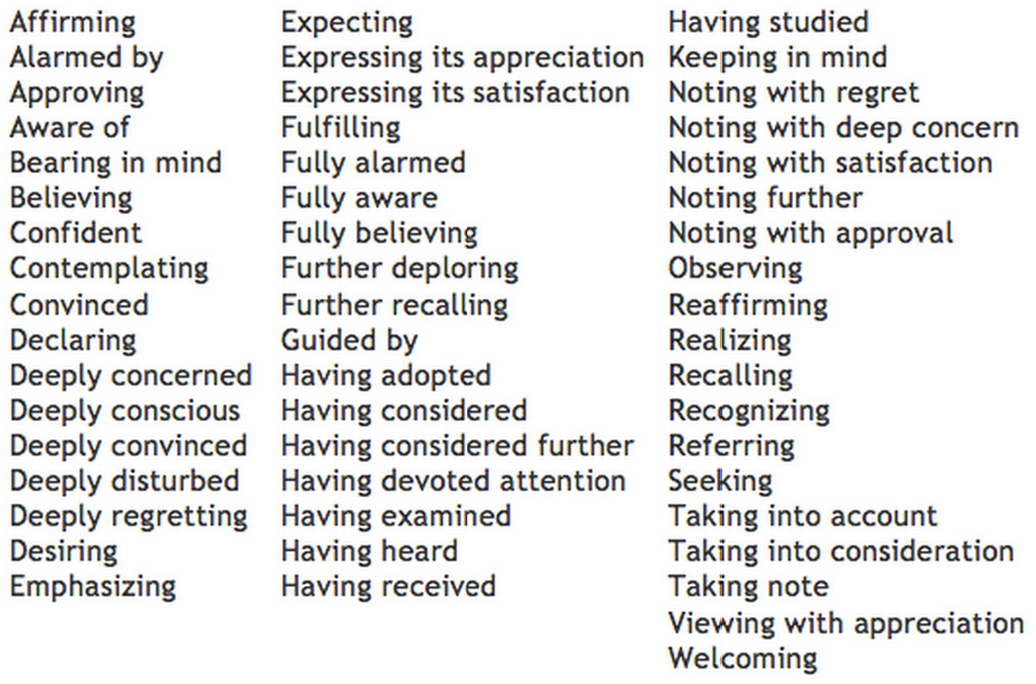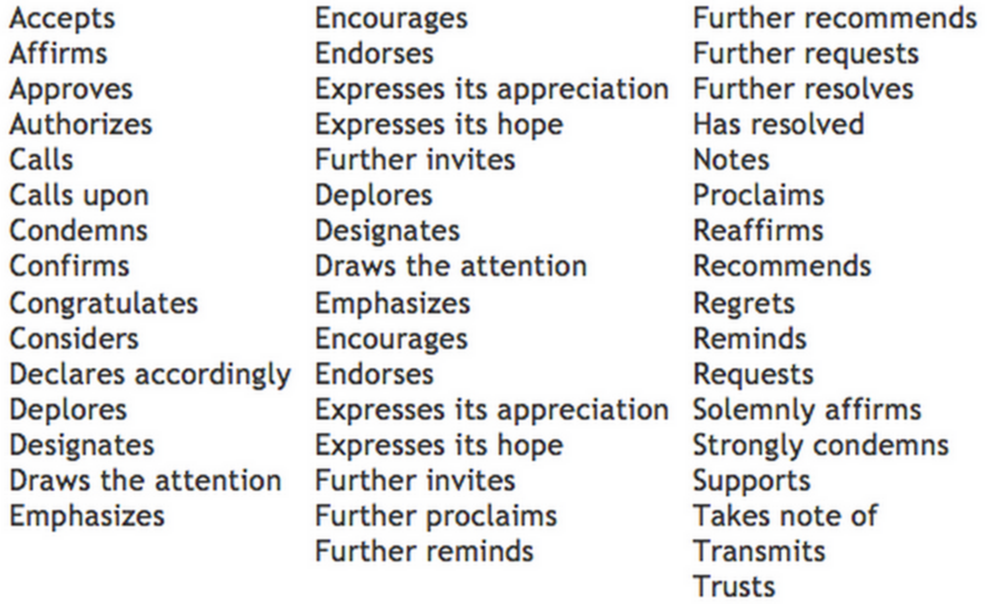Position Papers
What is a position paper?
A position paper is a document that conveys a country’s position on an issue and is submitted by a delegate to his/her chair before the conference. Normally, conferences will require delegates to submit their position papers two weeks before the conference takes place. A position paper is usually one page in length. It is fair to say that it is an assessment of the outcome of a delegate’s research, because in order to write a remarkable position paper, it is necessary to first have conducted comprehensive research.
What goes in a position paper?
Position papers are very factual, and should include a lot of academic information.
A remarkable position paper should be able to be divided into three parts, with the first part including a brief introduction of your country and the history of the issue in your nation. How has your nation suffered from the problem? And what are some actions it has taken to alleviate the damage? In the second part, include your nation’s stance towards the issue, and support it with historic facts, statistics, and other information you’ve gathered from your research. In the third part, propose a solution to the solve issue. How would your country like the problem to be solved? What are some methods that your countries supports or opposes?
Heading
Most conferences specify the format required for a position paper. If the conference has not declared a format, here is a common format most conferences require for delegates to follow:
(font size: 12; font type: Times New Roman)
Committee: Economic and Social Council
Topic: Empowering Women’s Rights
Country: United Kingdom
In the past few decades, the United Kingdom….. (You get the picture, right?)
*you can find a sample position paper here
Working Papers
What is a working paper?
A working paper is a precursor to a draft resolution. They are created either by an individual or by a bloc. Unlike draft resolutions, working papers are not voted on, nor do they need to be introduced to the committee before having debate on it. Normally working papers are required to be submitted to the chair before the second session of a conference ends.
What goes in a working paper?
Working papers include possible solutions to improving the current situation of the issue. Since they do not follow any type of format, usually they are a tad less formal than draft resolutions.
How do I format a working paper?
As mentioned above, working papers do not follow any fixed format. But remember to put your countries’ names at the top of the document so to let the dais team know who the submitters are!
Draft Resolutions
What is a Draft Resolution?
A draft resolution is essentially a long sentence that seeks to solve the issue at hand. Draft resolutions are the final outcomes of blocs that have striven to come up with solutions to solve the issue, and are normally required to be submitted before the fourth session begins (sometimes earlier). In UNA-USA procedures, a “potential draft resolutions” must first be introduced to the floor before it can be referred to as a “draft resolution”, and only one draft resolution is allowed to pass at the end of the conference. If a draft resolution passes, it shall no longer be referred to as a “draft resolution”, but a “resolution”.
*hint: “potential draft resolution” →(introduced to floor)→ “draft resolution” → (votes on DR, passes) → “resolution”
What goes in a Draft Resolution?
- Heading
- Preambulatory Clauses
- Operative Clauses
Heading
COMMITTEE: (insert the committee you are in)
TOPIC: (insert topic of committee)
SPONSORS: (insert at least two country names)
SIGNATORIES: (insert country names)
*You can read more about “sponsors” and “signatories” in the Glossary page
Preambulatory Clauses
Clauses that introduces the issue and emphasizes its urgency. Delegates can include references to previous UN resolutions or ratified conventions/declarations. They also often congratulate countries or organizations that have put effort into ameliorating the issue at hand.
Sample preambulatory phrases:
Operative Clauses
Clauses that suggest/take action to solve the issue at hand. It is important that your operative clauses are actually feasible and that they reflect the policies of the country you represent. They should not be too idealistic or else other delegates will challenge you about them.
Sample operative phrases:
How do I format a draft resolution?
- Preambulatory phrases are italicized while operative phrases are underlined.
- Preambulatory clauses are followed by a comma while operative clauses are followed by a semicolon
- There is a line-space between each preambulatory and operative clause.
- Each operative clause is numbered
- Sub-clauses begin with a), b), c), etc; sub-sub-clauses begin with i), ii), iii), etc
- Abbreviations are written out in full the first time they are used.
- The last operative clause is followed by a period.
*you can find sample draft resolutions here
Have any questions or suggestions? Email us at themunual@gmail.com


